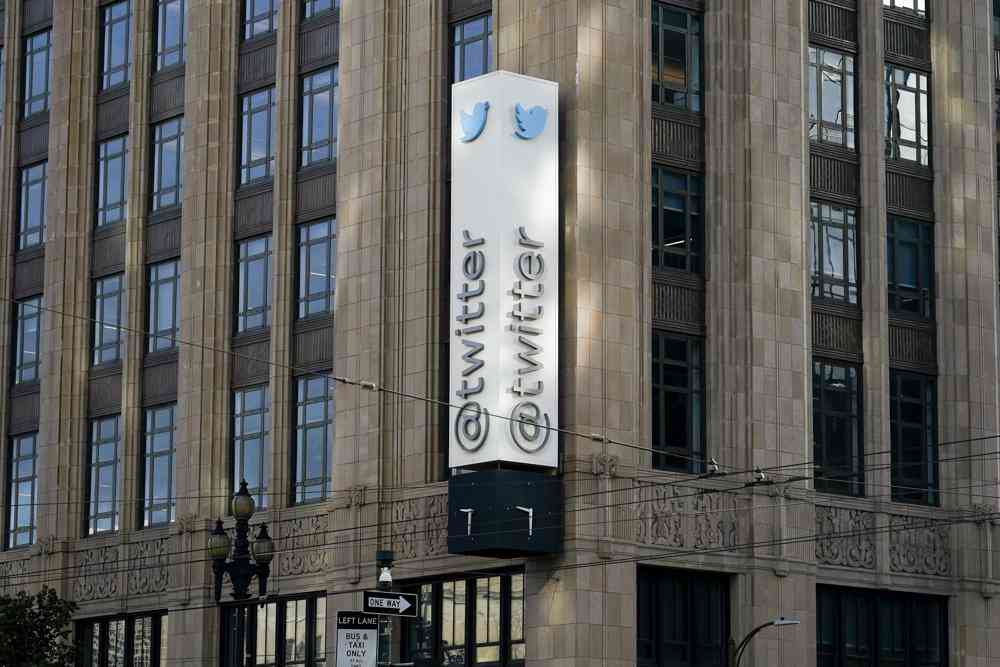
Now you see a new “official” label on some high-profile Twitter accounts, now you don’t.
Twitter began adding gray “official” labels to some high-profile accounts Wednesday to indicate that they are authentic, the latest twist in new owner Elon Musk’s chaotic overhaul of the platform and its verification system. A few hours later, the labels started disappearing.
“Please note that Twitter will do lots of dumb things in coming months,” he tweeted. “We will keep what works & change what doesn’t.”
The rollout appeared arbitrary, with some politicians, news outlets and well-known personalities getting the official label and others not. Musk seemed to acknowledge the confusion and embraced his role as “Twitter Complaint Hotline Operator” as he invited users to send him complaints.
Media sites like The Associated Press, The New York Times, The Washington Post and The Wall Street Journal received an official designation, as did companies like Nike, Apple and Coca-Cola. And then they were gone.
Before they disappeared, the labels were causing confusion. For instance, users in London could see an “official” label attached to a BBC News account, but the label didn’t show up for users in the U.S.
YouTube personality and author John Green jokingly noted that he got the label, but his younger brother and “vlogging” partner Hank Green didn’t make the cut. But then John Green’s label was gone, too. Another popular YouTuber, Marques Brownlee, who posts videos on technology, tweeted he got the label, then tweeted again that it disappeared, which attracted the attention of Musk himself.
“I just killed it,” Musk responded, though at first it wasn’t clear if he was referring specifically to Brownlee’s label or the entire project.
- Twitter alternatives for the Musk-averse
- Building narratives: Nurse pens anti-child marriages fiction novel
- Social Media Handles Of Exiled Tibetan Government Under Threat
- Building narratives: Nurse pens anti-child marriages fiction novel
Keep Reading
The site’s current system of using what are known as “blue checks” confirming an account’s authenticity will soon go away for those who don’t pay a monthly fee. The checkmarks will be available at a yet-to-be-announced date for anyone willing to pay a $7.99-a-month subscription, which will also include some bonus features, such as fewer ads and the ability to have tweets given greater visibility than those coming from non-subscribers.
The platform’s current verification system has been in place since 2009 and was created to ensure high-profile and public-facing accounts are who they say they are.
Experts have expressed concern that making the checkmark available to anyone for a fee could lead to impersonations and the spreading of misinformation and scams.
The gray label — a color that tends to blend into the background whether you use light or dark mode to scroll Twitter — was an apparent compromise. But it was expected to lead to more confusion, as Twitter users accustomed to the blue check as a mark of authenticity would now have to look for the less obvious “official” designation.
Esther Crawford, a Twitter employee who has been working on the verification overhaul, said Tuesday on Twitter that the “official” label would be added to “select accounts” when the new system launches.
“Not all previously verified accounts will get the ‘Official’ label and the label is not available for purchase,” said Crawford, who recently was the subject of a viral photo showing her sleeping on the floor of a Twitter office while working to meet Musk’s deadlines.
Crawford said those receiving the label would include government accounts, commercial companies, business partners, major media outlets, publishers and some public figures.
There are about 423,000 verified accounts under the outgoing system. Many of those belong to celebrities, businesses and politicians, as well as media outlets.
But a large chunk of verified accounts belong to individual journalists, some with tiny followings at local newspapers and news sites around the world. The idea was to verify reporters so their identities couldn’t be used to push false information on Twitter.







